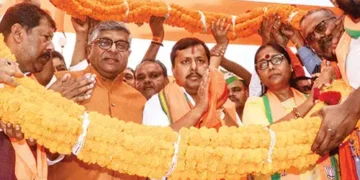Nishant Bhaiji
OVER the past decade, India’s political scene has undergone a digital metamorphosis, shifting from traditional campaigning methods to sophisticated digital platforms. The evolution from Facebook’s dominance in 2014, through WhatsApp in 2019, to YouTube’s emergence in 2024 illustrates a significant transformation in how political engagement and campaigning are conducted in the country.
YouTube has now overtaken previous platforms as the foremost channel for political discourse in India. This can be attributed to several factors. Firstly, the decline in WhatsApp’s credibility due to rampant misinformation has prompted a move toward platforms supporting video content, which offers dynamic interaction and is perceived as more transparent. Moreover, enhanced internet speeds and the affordability of mobile data have made YouTube a more accessible tool across diverse Political entities have adeptly harnessed YouTube to broaden their influence and engage with the electorate more effectively. The Aam Aadmi Party (AAP) currently leads with 4.25 million subscribers, with the Bharatiya Janata Party (BJP) and the Indian National Congress (INC) close behind. These channels serve multifaceted purposes—they are venues for broadcasting rallies and speeches, platforms for interactive voter sessions, and mediums for live event streaming. Importantly, they also play a critical role in countering misinformation.
The shift toward YouTube has markedly influenced political advertising spending patterns. Data from 2024 highlights a significant allocation of campaign budgets to Google Ads, prioritising video content over other advertising forms such as those offered by Meta Ads. This trend is indicative of the growing recognition of video content’s effectiveness in capturing voter attention and swaying public opinion.
YouTube’s ability to verify content and implement transparency measures has made it a valuable tool in the fight against misinformation.
However, the platform faces challenges, especially in the context of India’s linguistic and cultural diversity. The subtleties of regional dialects and cultural nuances complicate the accuracy of automated content moderation systems, as noted by experts like Rohini Lakshane.
As YouTube becomes a primary venue for political content, it encounters persistent challenges in content regulation and maintaining quality. The platform’s openness can sometimes counteract efforts to ensure content integrity, leaving it vulnerable to misuse. Furthermore, impending regulations, such as the Data Protection Act, pose additional challenges, necessitating stricter content management to curb hate speech and election misinformation.
YouTube’s central role in the 2024 elections marks a critical shift in political communication and voter engagement in India. While it offers substantial advantages in terms of reach and interactivity, it also presents ongoing challenges related to content quality and adherence to regulatory norms.
In conclusion, YouTube’s prominence in the 2024 Indian elections not only highlights the changing dynamics of digital campaigning but also underscores the broader implications of technology on political engagement and democratic processes in the nation.
































